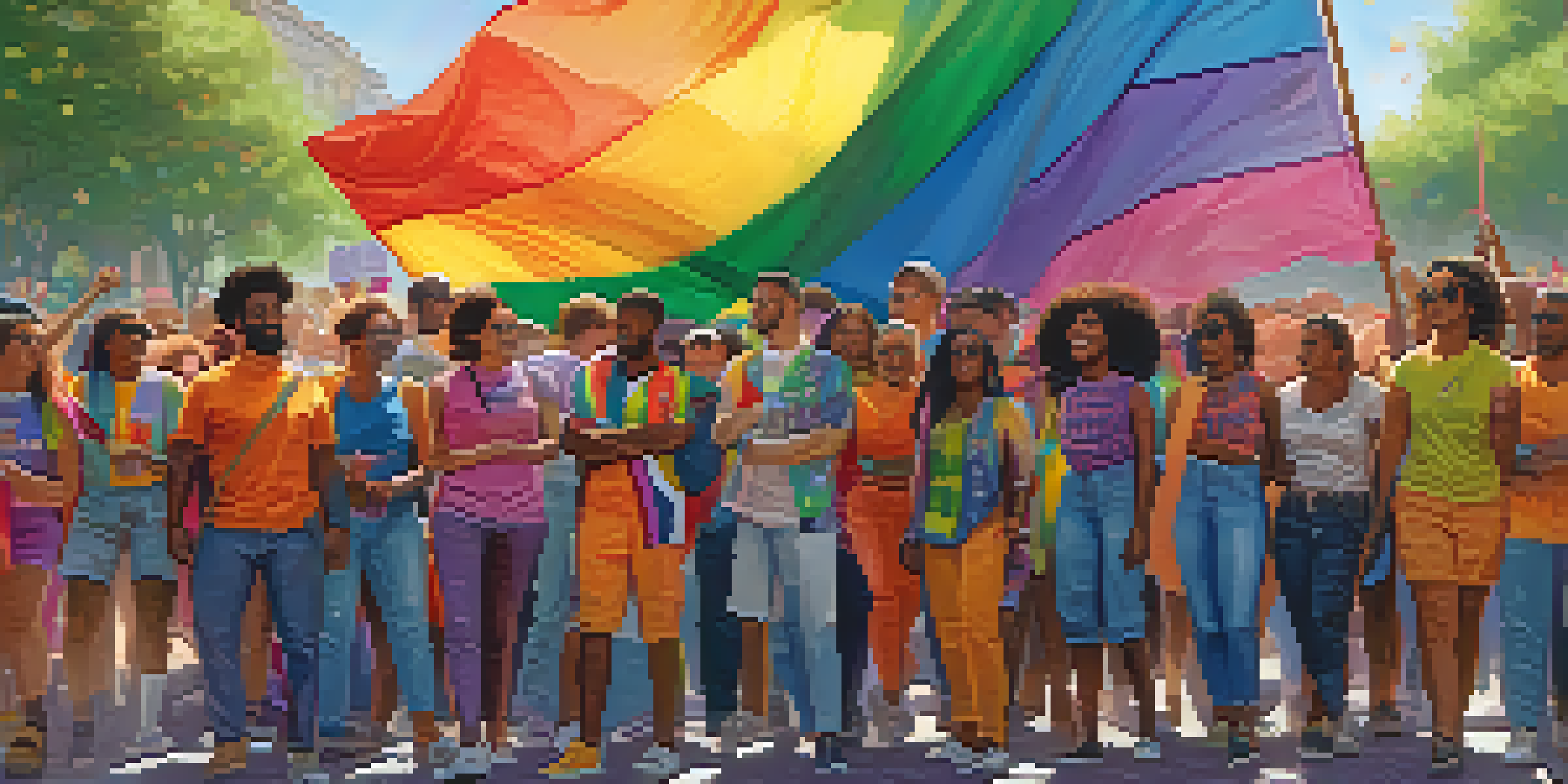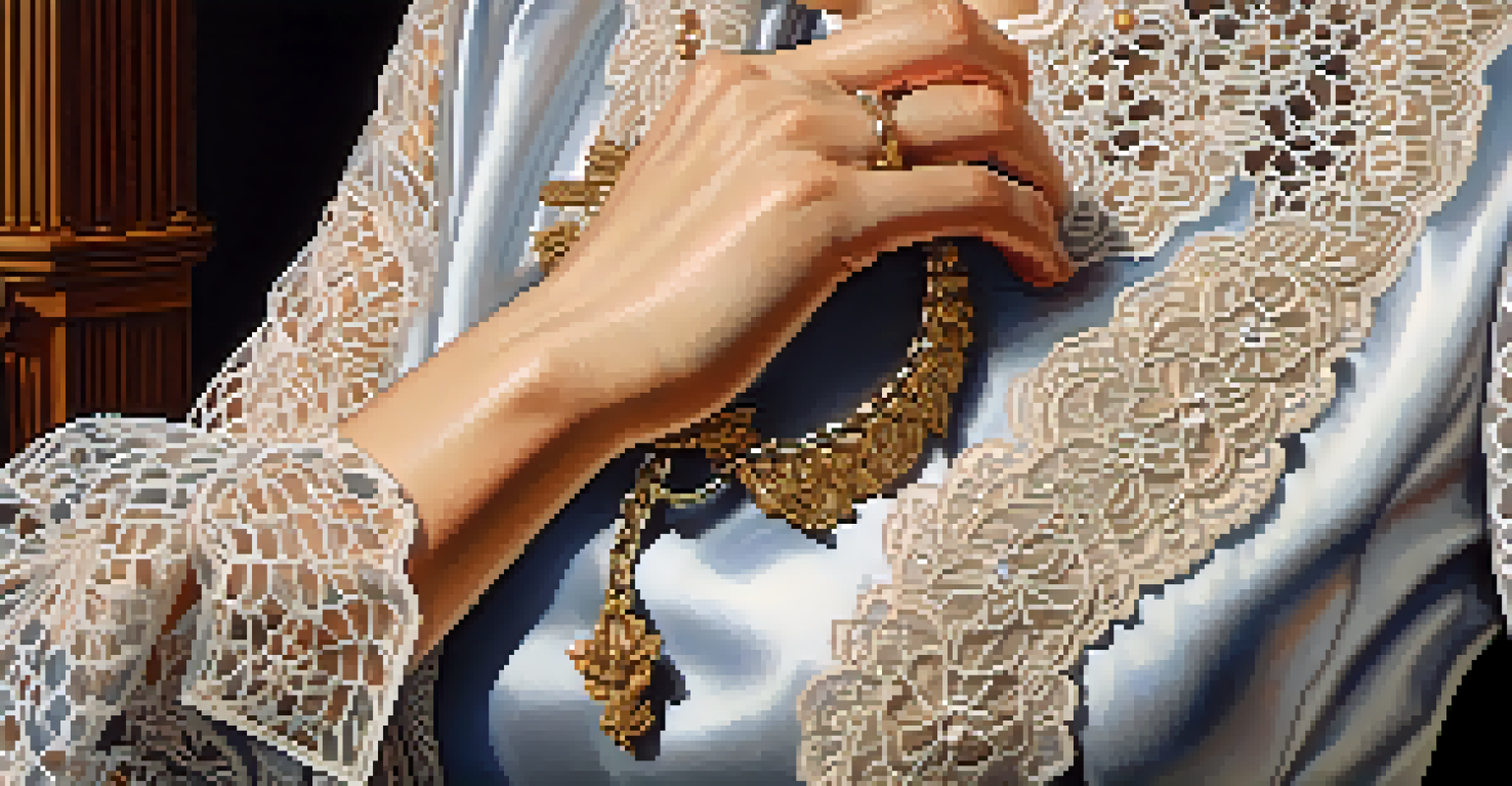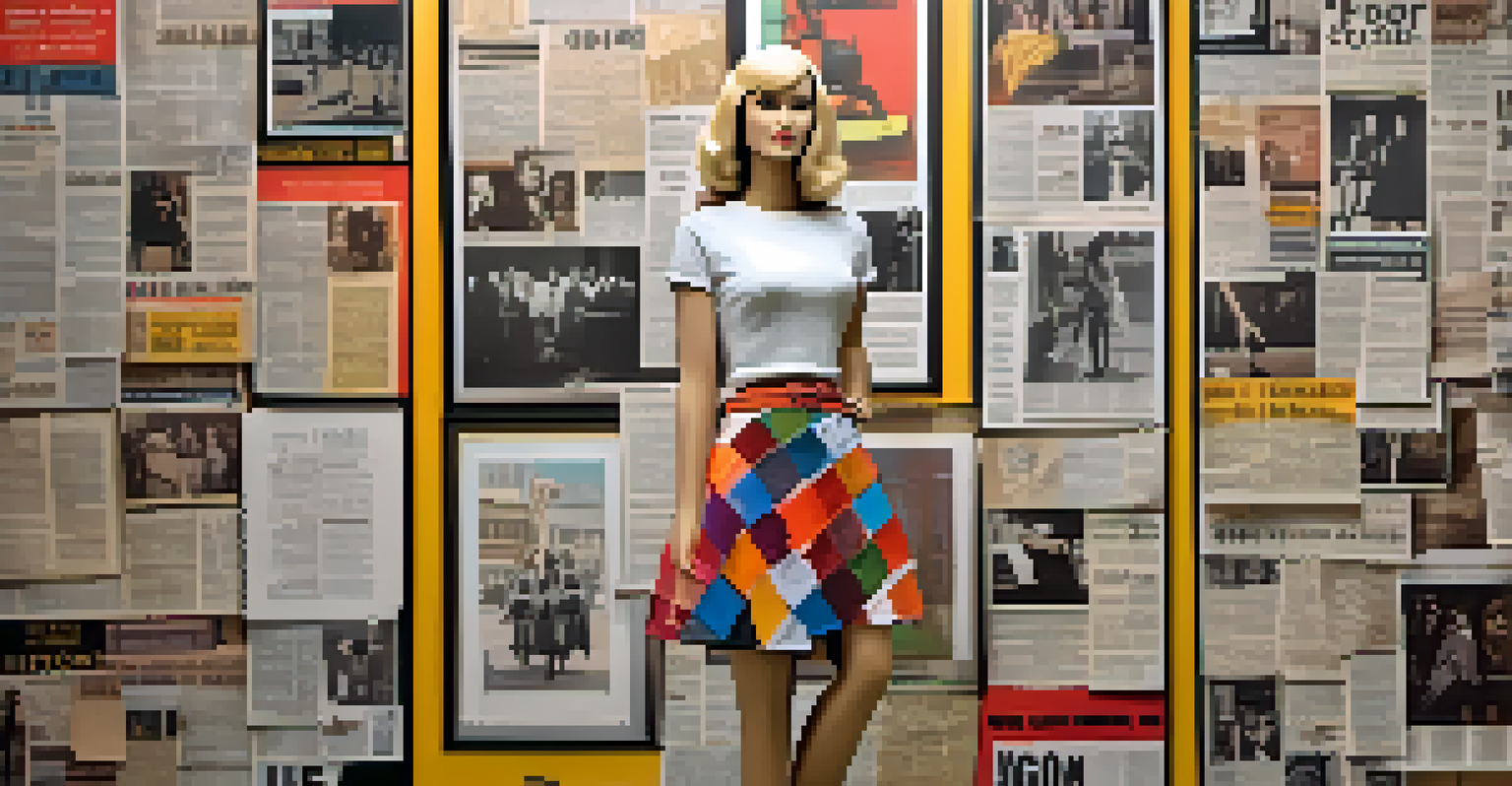Fashion as Protest: Iconic Outfits in Political History

The Power of Clothing in Social Movements
Fashion has always been more than just fabric; it’s a form of expression that can challenge the status quo. Throughout history, clothing has played a pivotal role in social movements, conveying messages of resistance and solidarity. For example, the suffragettes wore white as a symbol of purity and a call for women's rights, turning their outfits into powerful statements.
Fashion is the armor to survive the reality of everyday life.
When individuals don certain outfits, they often find themselves part of a larger narrative, one that can inspire change. Think about how wearing a specific color or style can evoke emotions or memories linked to a cause. This kind of awareness demonstrates how choices in fashion can transcend personal style and become a voice for the voiceless.
Moreover, the visual impact of fashion in protests captures the attention of the media and the public alike. Outfits that stand out can become iconic, serving as a rallying point for movements, as seen with the pink hats of the Women’s March. In a world filled with noise, fashion can be a clear and impactful way to communicate a message.
The Black Panther Party and the Power of Uniforms
In the late 1960s, the Black Panther Party adopted a distinctive uniform of black leather jackets, berets, and sunglasses. This choice was not just about aesthetics; it was a deliberate strategy to project strength and unity. By wearing similar outfits, members communicated solidarity and purpose, establishing a recognizable identity that resonated with their cause.

The uniform also served a practical purpose, making the members easily identifiable during protests and rallies. It symbolized their commitment to fighting racial injustice and police brutality. This visual representation allowed them to forge a connection with the community, creating a sense of pride and empowerment among supporters.
Fashion as a Voice for Change
Clothing can convey powerful messages, transforming personal style into symbols of activism and solidarity.
The Black Panther uniform is a prime example of how fashion can encapsulate a movement's ideals and aspirations. Even today, this iconic outfit is often referenced in discussions about civil rights and activism, illustrating the enduring legacy of their powerful statement through clothing.
The Women's Liberation Movement and the Miniskirt
The miniskirt emerged as a symbol of the 1960s Women's Liberation Movement, representing freedom and autonomy over one’s body. As women began to assert their rights, the miniskirt became a bold declaration of independence, challenging traditional norms of femininity. It was a fashion statement that said, 'I can wear what I want, and it doesn’t define my value.'
Style is a way to say who you are without having to speak.
Fashion designers like Mary Quant played a crucial role in popularizing the miniskirt, making it accessible to women everywhere. This shift in clothing not only transformed how women dressed but also how society perceived them. The miniskirt became a catalyst for discussions around women's rights, sexuality, and empowerment.
By embracing the miniskirt, women were not just making a fashion choice; they were participating in a cultural revolution. This outfit became a powerful emblem of the struggle for gender equality, showing how fashion can intersect with activism in profoundly significant ways.
Ruth Bader Ginsburg's Iconic Jabots and Feminism
Justice Ruth Bader Ginsburg was renowned not only for her legal prowess but also for her distinct fashion choices. Her collection of jabots—decorative collars—became her signature look, symbolizing her unique approach to feminism and justice. Each jabot often reflected her mood or the significance of the case at hand, providing a visual representation of her persona.
Ginsburg’s fashion choices were intentional; they served to challenge the predominantly male-dominated judicial system. By embracing her femininity while occupying a powerful role, she communicated the message that women can be both fashionable and formidable. She showed that clothing can be a tool for empowerment, blending style with substance.
Uniforms Unite Movements
Distinctive uniforms, like those of the Black Panther Party, foster a sense of identity and purpose among members.
Her jabots became iconic, turning into a symbol of resilience and strength for women everywhere. Ginsburg’s legacy reminds us that fashion can be a means of protest and empowerment, encouraging future generations to express themselves boldly, even in the most serious of settings.
The Rainbow Flag and LGBTQ+ Rights
The rainbow flag is a powerful symbol of the LGBTQ+ rights movement, representing diversity and acceptance. Designed by Gilbert Baker in 1978, the vibrant colors of the flag convey messages of hope, love, and unity. This flag has transcended mere fabric, becoming a global emblem for equality and a visual protest against discrimination.
Wearing rainbow clothing during pride events and protests demonstrates solidarity within the community and raises awareness about LGBTQ+ issues. It sends a clear message: love is love, and everyone deserves the right to express their identity freely. This collective display creates a sense of belonging and empowerment for individuals who may feel marginalized.
The rainbow flag continues to inspire activism and celebration, showing how fashion can serve as a powerful tool for social change. As more people embrace this symbol, it reinforces the idea that fashion is not just about personal style but also about advocating for rights and justice in society.
Protest Fashion: From T-Shirts to High Fashion
Protest fashion has evolved from simple t-shirts with slogans to high-fashion statements that demand attention. Designers have increasingly collaborated with social movements, using their platforms to advocate for change. This fusion of fashion and activism makes a bold statement, turning runways into stages for social justice.
For instance, the 'I Can’t Breathe' t-shirt became a rallying cry during the Black Lives Matter protests, illustrating how clothing can amplify urgent messages. High-profile figures wearing these shirts helped to garner international attention and support. By merging fashion with activism, they transformed everyday clothing into powerful symbols of resistance.
Fashion Reflects Cultural Shifts
Fashion serves as a mirror, reflecting societal values and movements, while challenging norms and shaping identities.
As the lines between fashion and activism blur, the industry continues to reflect societal issues. This evolution highlights how fashion can be a vehicle for protest, allowing individuals to express their beliefs and values. Whether through a simple tee or a designer gown, what we wear can signify our stance on important issues.
Fashion as a Reflection of Cultural Movements
Fashion often acts as a mirror, reflecting the cultural and political movements of its time. From the hippie movement's tie-dye shirts to the punk rock aesthetic, clothing choices can encapsulate the spirit of an era. These outfits tell stories about societal values, struggles, and aspirations, making them vital components of our cultural history.
As we look back, we see how fashion has been instrumental in shaping identities and promoting change. The styles that emerged during various movements not only defined fashion trends but also challenged societal norms. For example, the grunge look of the 90s conveyed a sense of rebellion against consumerism, resonating with a generation seeking authenticity.

Understanding fashion as a form of protest helps us appreciate its role in shaping conversations around identity and power. As we navigate contemporary issues, it’s essential to recognize how fashion continues to evolve alongside cultural movements, influencing and inspiring future generations.
The Future of Fashion as Protest
As we move forward, the intersection of fashion and activism is likely to grow even more pronounced. With social media amplifying voices and causes, outfits can quickly become symbols of movements. Influencers and activists alike are using their platforms to promote messages of equality and justice through their fashion choices, making activism more accessible than ever.
This future also brings the challenge of ensuring that fashion remains authentic and meaningful. As trends emerge, there’s a risk of commodifying protest, turning genuine movements into mere marketing strategies. It’s essential for designers and consumers alike to remain mindful of the messages their clothing conveys.
Ultimately, the future of fashion as protest will depend on our collective commitment to using our voices—and our wardrobes—responsibly. By embracing fashion as a tool for change, we can continue to create a world where style and activism go hand in hand, making powerful statements that resonate far beyond the runway.